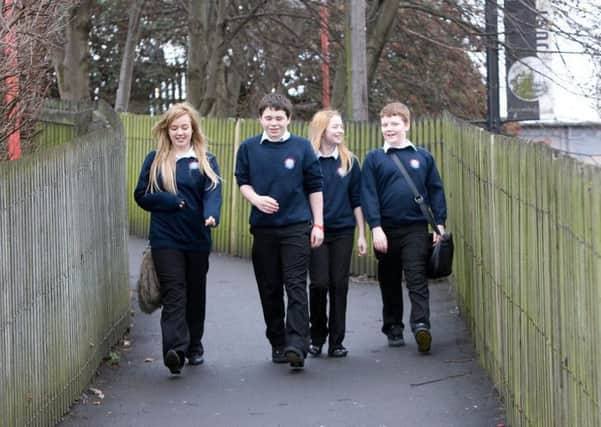Get active and walk to school


Living Streets, the UK charity for everyday walking, is urging families across the midlands and the UK to walk to school to tackle the growing levels of inactivity amongst children.
Last month’s Active Travel Survey showed walk to school rates are at a record low.
Advertisement
Hide AdAdvertisement
Hide AdJust 48 per cent of primary school age children walk to school in the UK, compared with 70 per cent a generation ago.
At the same time, levels of obesity are inactivity are on the rise with over a third of 11 year olds obese or overweight, and just one in five children sufficiently active to stay healthy.
In the lead up to International Walk to School Month, the charity has been speaking with organisations across the world also working to get more children walking to school, and identified a worldwide trend to promote active travel as a way to tackle inactivity.
Julia Crear, regional director at Living Streets said: “Many of us need to start moving more, and walking to school is a free and achievable way to fit more activity into a family’s day.”
Advertisement
Hide AdAdvertisement
Hide AdIn England, increasing the number of children walking to school was identified as a priority in the Government’s Childhood Obesity Strategy this summer.
The new Cycling and Walking Investment Strategy (CWIS), expected to be out later in the year, will set out how the Government plans to get more people walking and cycling everyday journeys, like the trip to school.
Living Streets’ research found that over half of parents who don’t walk to school with their children would like to but are put off by various factors, including traffic speeds and unsafe parking.
Ann Irving, a mother who took part in the research, said: “There is no disincentive to car use.
Advertisement
Hide AdAdvertisement
Hide Ad“If we policed speeding more thoroughly then fewer children and parents would be scared, and more would feel comfortable walking.
“If we banned all delivery traffic at school arrival times - private and commercial - it would be easier to walk.”
Living Streets runs WOW – the year-round walk to school challenge.
WOW rewards children who walk to school at least once a week with collectable badges and has been shown to increase walking rates by 23 per cent.
Advertisement
Hide AdAdvertisement
Hide AdLiving Streets also works with local authorities to make sure streets are fit for walking so that families feel safe to do so.
Julia Crear continued: “We work in schools in the midlands to increase the number of pupils walking to school through WOW - our walk to school challenge.
“If walking the whole way isn’t possible, we encourage Park and Stride - it reduces congestion and pollution around the school gates and allows children to get active for the last few minutes of their journey.
Living Streets offers a special month-long trial package of WOW which can be used by schools at any time throughout the year.
For more information on WOW, park and stride schemes and walking zones, or to share your thoughts, visit www.livingstreets.org.uk/iwtsm